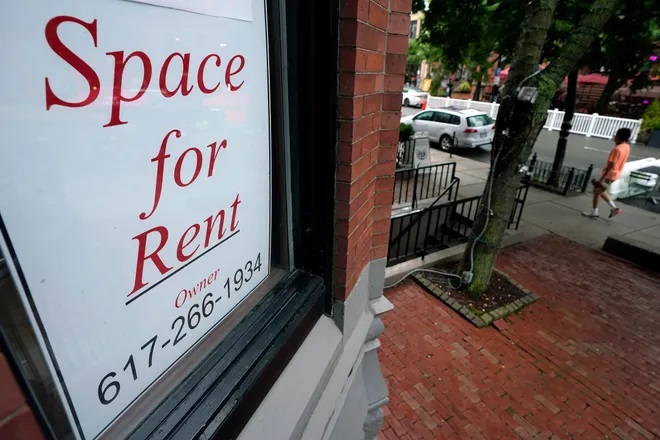The COVID-19 pandemic has profoundly impacted our lives. The entire ecosystem collapsed during the early months of the pandemic as office workers shifted to working from home. The office market has been slow to recover as remote work remains popular. On the flipside, companies now realize that employees can remain productive while working from the comfort and safety of their homes. As a result, businesses have decided to reduce their need for physical office spaces.
Scoop Technologies monitors workplace strategies for close to 4,500 companies. They reported the following:
- 58% of companies allow employees to work a portion of their week from home.
- 42% of companies require employees to be in the office full time.
There is more vacant office space in the United States than ever before. According to projections from Cushman & Wakefield, a commercial real estate services company, the vacancy rate in the U.S. national market stood at 18.6% in the first quarter of 2023.
Some economists have expressed concern that commercial real estate, walloped by vacancies and now higher interest rates, faces major financial challenges. Mark Rose, CEO of global real estate advisory firm Avison Young, said until now he has “not seen the level of givebacks of office buildings that he has in the past few months.”
Analysts expect office defaults to increase as mortgages with low interest rates expire. About $2.6 trillion in commercial mortgages are set to mature between 2023-2027.
Rise of the remote workforce
The advancement of technology and the availability of high-speed internet have significantly contributed to the remote work revolution. Video-conferencing platforms, project management tools and cloud-based collaboration software have allowed teams to work together seamlessly from different locations. In response, companies have reevaluated the necessity of a centralized physical office space.
Robert Sadow, Scoop’s CEO, said, “As long as unemployment remains low, workers have the leverage to entrench these policies. Employees are saying we are going to push really, really hard against being required to be in the office five days a week. Most companies in the current labor market have been reluctant to push back that hard.”
The millennial and Gen Z workforce, which now represents a significant portion of employees, have different expectations when it comes to work environments. They prioritize work-life balance, flexibility and meaningful work environments.
Analysts say that the lower demand for office space appears permanent. This is terrible news for New York City because its office property taxes supply about one third of NYC’s annual revenue. More than 1.5 million commuters worked out of NYC’s offices. They spent money on food, at retail stores and on entertainment.
Rebecca Rockey, deputy chief economist at Cushman & Wakefield, pointed out that while nationally, U.S. office vacancies are at their highest rate on record, the headline figures make a “tremendous amount of variation” between different metropolitan areas. Ms. Rockey noted that the vacancy rate may be higher in some cities because of new construction rather than a fall in demand. This includes cities such as Austin, Texas; Raleigh-Durham, N.C.; and Salt Lake City, Utah.
In San Francisco: Lots of supply, no demand
The worst-affected U.S. metropolitan area is San Francisco, which has seen a sharp fall in demand for office space. Between the last quarter of 2019 and the first quarter of 2023, office vacancy rates in the Californian tech hub rose from 5% to 24.8%, according to data from Cushman & Wakefield.
Analysts believe that the lower demand for office space appears permanent. To adapt to the new normal, property owners must be willing to embrace change, reimagine office spaces, and to prioritize flexibility, well-being and innovation. To combat rising vacancies, property owners are exploring creative ways to repurpose and redevelop office spaces. While converting may sound simple and appealing, it is expensive. In many cases, it requires cities to amend their zoning laws.
Originally published in the Sarasota Herald-Tribune




